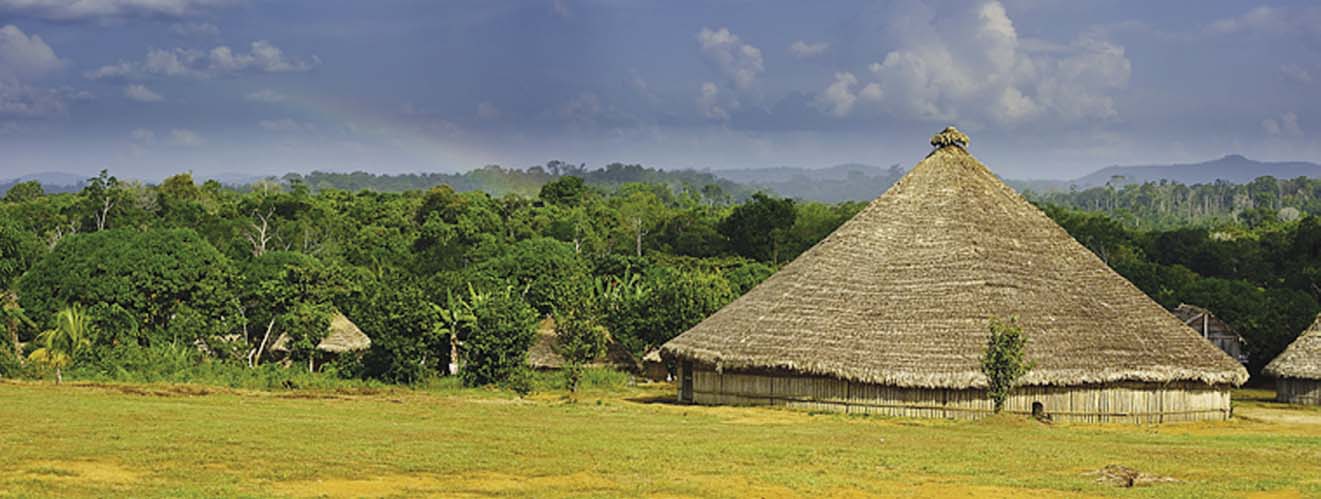Amerindian settlements
 The large meeting house in Masakenari - a remote WaiWai village in Guyana. (James Broscombe)
The large meeting house in Masakenari - a remote WaiWai village in Guyana. (James Broscombe)
It is generally believed that Guyana’s first inhabitants, the Amerindians, originally entered the territory of what is now known as Guyana about 11,000 years ago. Initially they lived on the low, swampy coastland region.
Research by the Guyanese anthropologist, Dennis Williams, shows that while the earliest Guyanese were hunters, about 7000 years ago they graduated to become hunter-gatherers.
Archaeological studies reveal that a group of these people occupied Barabina Hill near to Mabaruma around that period.
In the North-West District and the Pomeroon, where they were firmly established as fish, turtle, snail and crab catchers, their settlements were more permanent, but in the interior areas, they moved their campsites from time to time. Some of these settlements were in the Mazaruni basin, the Pakaraima highlands, the Rupununi and the Berbice River.
The earliest of such settlements in the North West District were established around Hosororo and later in the Aruka River (in the North West District) about 3,000 years ago. But archaeological research has shown that Amerindian groups actually began living in those areas, though not on a permanent basis, from about 3,400 years ago.
About 2,000 years ago, the first farming community appeared on the Corentyne River near to Wonotobo Falls. Later, other communities developed on both banks.
The district around Orealla began to be settled about 1,000 years ago. From this area there was a western expansion across the intermediate savannahs up to the Demerara River.
Archaeologists have investigated a number of these settlement sites at Hitia (Berbice River), Tiger Island, Taurakuli and Doctor Ho Landing (Abary River); Idaballi, Karabu, Kibileri, Yamora, Barabara-Shanale, St. Francis and St Cuthbert’s mission (Mahaicony and Mahaica Rivers); and Seba (Demerara River). Most of the people living in these aras were Arawaks but some were Warraus. The largest Arawak settlement was Abary village in the upper Abary River, which unfortunately now lies under the reservoir created by the Mahaica-Mahaicony- Abary (MMA) project in the 1970s.
When the Dutch came to Guyana, they established plantations, forts and trading posts along the coastal rivers. Two wellknown settlements at that time were Nibbi and Ouden Amen on the Abary River. Because of the swampy nature of the land, some Amerindian communities constructed huge earth mounds.
Dennis Williams’ studies, based on the evidence of ceramic patterns, indicate that an early form of this settlement was at Joanna, (in the Black Bush Polder area on the Corentyne), going back to about 1,500 years ago.



